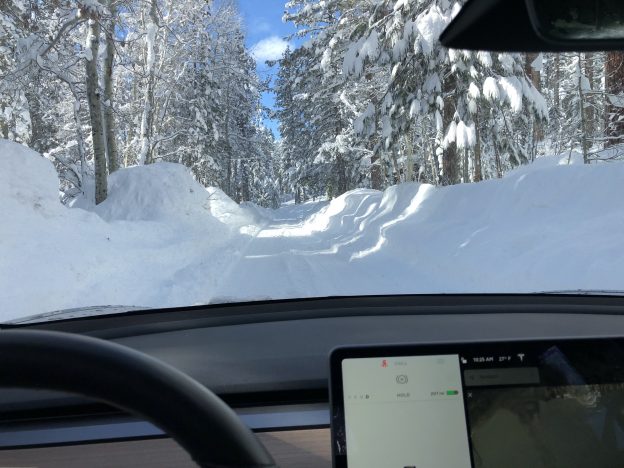February 2019. California.
We don’t often get snow in my town. According to my neighbor it’s been 23 years since honest-to-goodness snow has fallen in our part of California’s Central Valley. But when we get the urge for snow we don’t have that far to drive.
In good weather without traffic the trip to the north shore of Lake Tahoe takes 2 hours. Last weekend we went on an annual trip with friends up to the mountains, and this was the first time we drove our Model 3 for this trip.
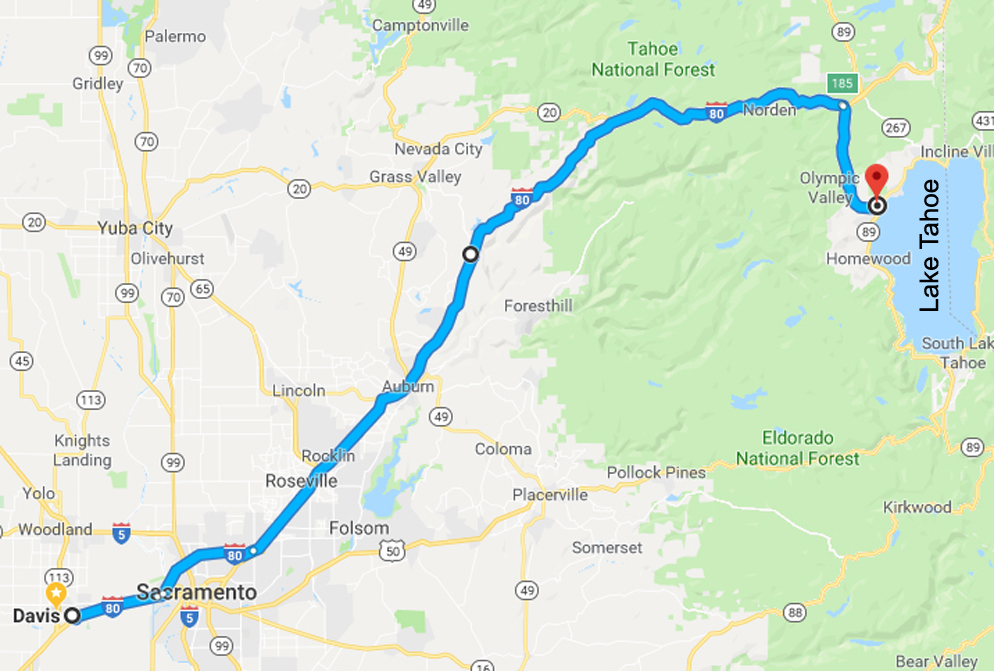
To make things interesting a large winter storm system called an atmospheric river was forecast to dump buckets of rain in California’s Central Valley and heavy snow up in the Sierra Nevadas. The forecasters got it right: several ski resorts ended up reporting nearly 100 inches of snow from this storm system. Getting up there was the challenge. Route 80 was closed due to white-out conditions, strong winds, and near-zero visibility at Donner Pass the day before we left.

The next day Caltrans reopened Route 80 and we decided to go for it. Our destination was about 125 miles and a 7200 foot climb up the western slopes of the Sierra Nevadas. We left home with 309 miles of rated range in the Model 3 and the navigator predicting an ETA of 2½ hours. The Model 3 navigator is pretty good at predicting ETA under normal conditions. We’ve driven through bumper-to-bumper traffic to San Francisco several times and the navigator’s ETA has been pretty accurate. However, driving to Lake Tahoe in snowy weather? I’ve seen this movie, I knew we were in for a longer trip.
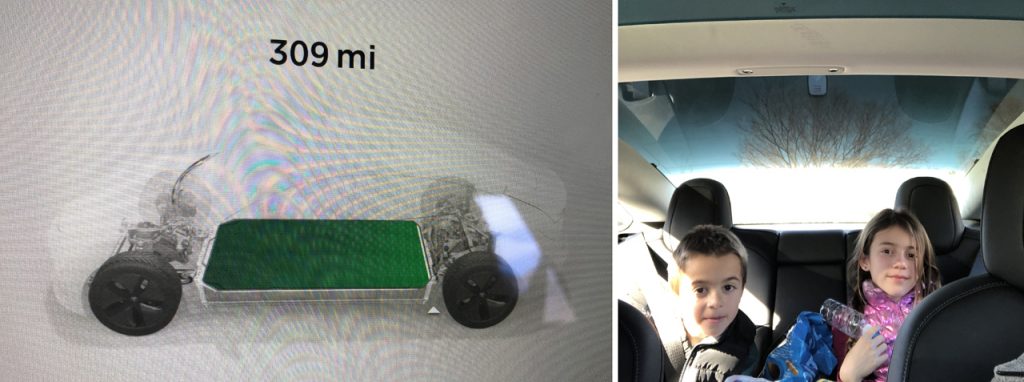
We had smooth sailing for an hour or so till Caltrans closed eastbound Route 80 due to icy conditions and multiple accidents. So we got off the highway in Colfax and meet up with our group of friends to grab an early dinner and plot our next step.
While eating our group navigator found a local route around the accidents and we decided to keep on going. I put tire chains on the rear wheels and we got back on the highway. Things looked good, light traffic, clear roads, a beautiful sunset, and then the fun began.
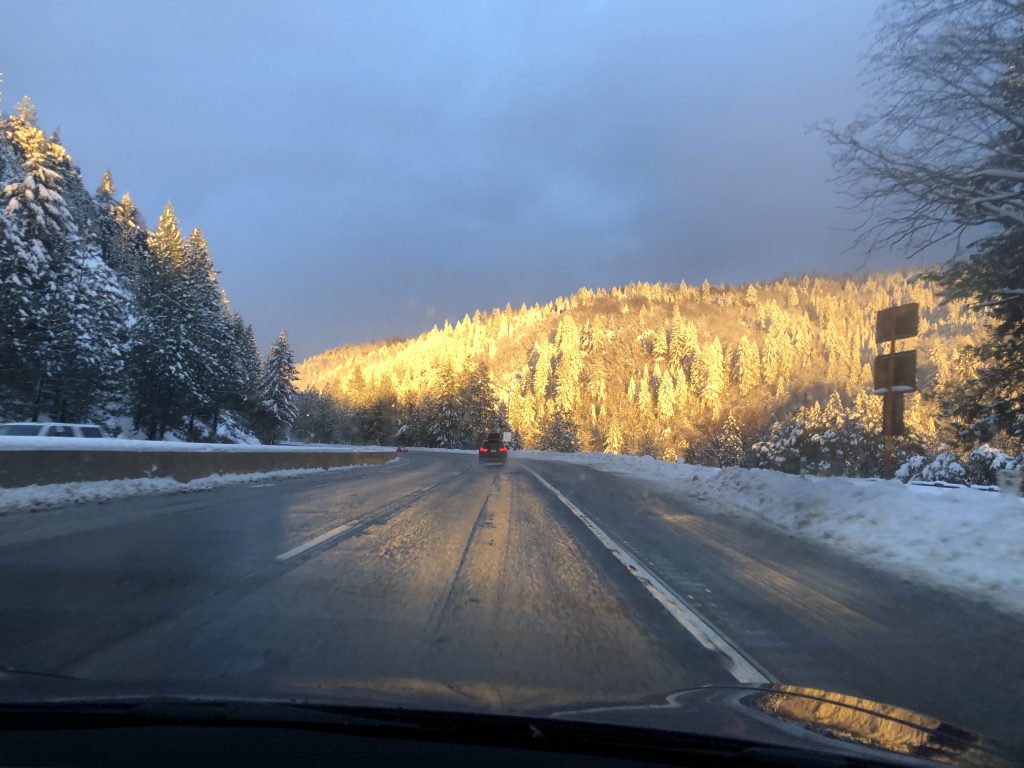
Heavy snowfall began after we climbed past 4000 feet of elevation. Freezing temps and heavy traffic compressed the snow into a very slick surface. We passed about 10 spin-outs, and many of these accidents stopped traffic while the cars involved were cleared to one side of the road.
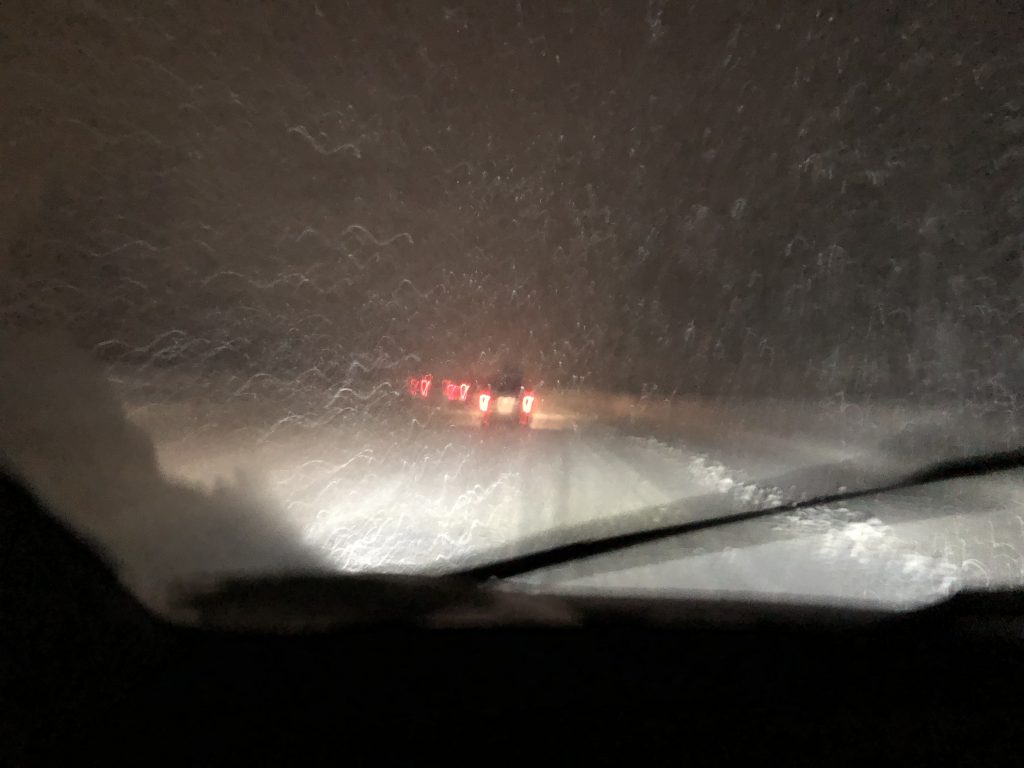
I was dressed for cold weather, and seat heaters and blankets were probably all our family needed to keep comfortable. But I had to keep the front windshield defroster on high the entire time to keep ice from freezing on the windshield wipers so we were plenty warm in the car. Traffic was slow because of the accidents and bad conditions – 20-25 MPH when it was moving. I would not have wanted to drive faster anyways.
Driving in the Snow
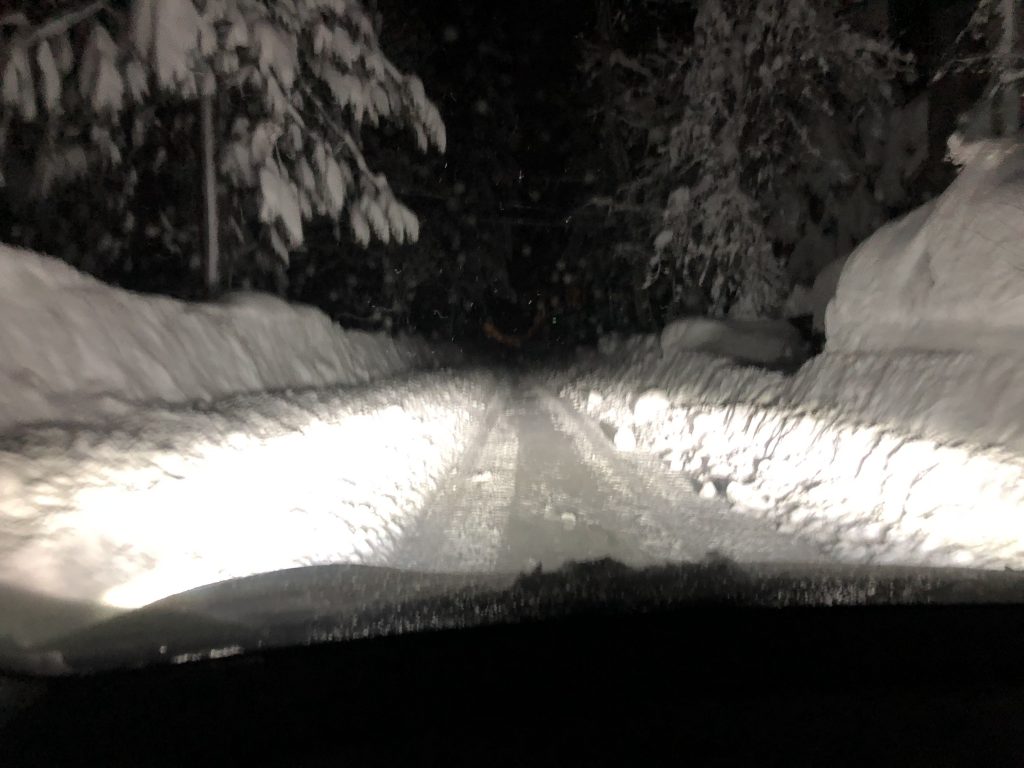
Our rear wheel drive Model 3 with tire chains handled the slippery conditions very well. If you’ve ever driven a rear wheel drive car in the snow with tire chains before this wasn’t any different. In my opinion you actually have better control in the snow with an EV. As long as you don’t tromp on the accelerator you have fine control over vehicle torque in an EV as you climb hills. The even weight distribution of the battery pack over the front and back wheels in the Model 3 probably helps with traction. We arrived with no problems.
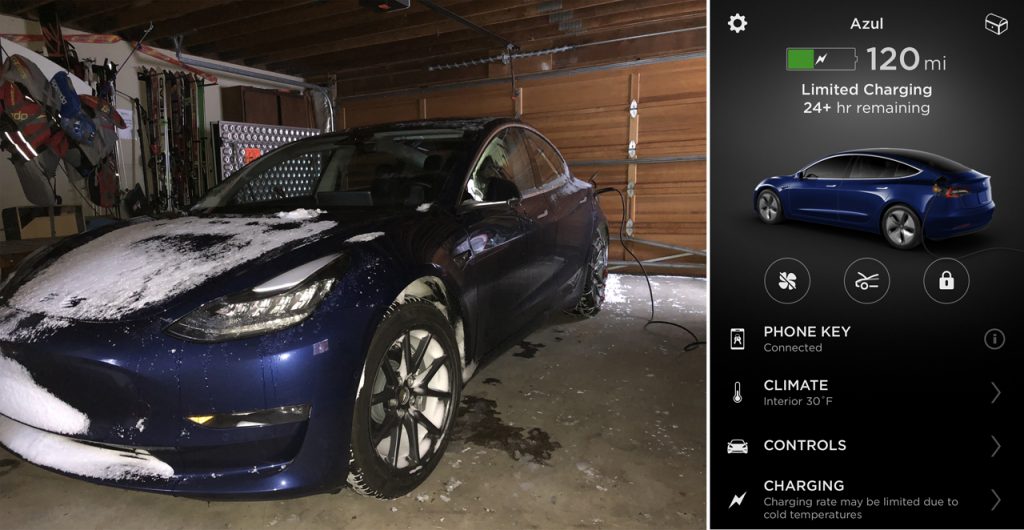
The home had an open spot in the garage so we plugged into a 120V outlet. I dialed the current down to 10 amps to avoid tripping the circuit. The garage was frozen, ice never melted off the car. I needed to push the door handles a bit harder than normal to open the doors, and I needed to clear ice off the charging port so it would open. Over 2 nights we gained 90 miles of rated range from the 120V outlet.
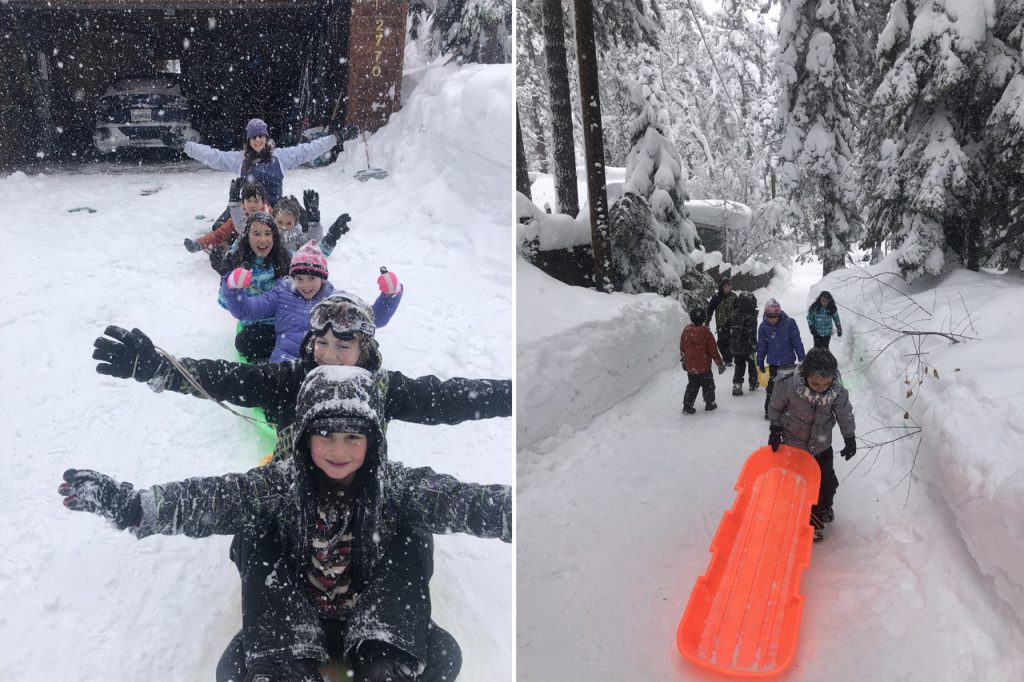
The whole point of this trip was fun in the snow, and we had a blast. The kids had 2 days of sledding and time in the snow. We were very close to the lake and walked through deep snow along the shore to enjoy the quiet snowfall and beautiful views.
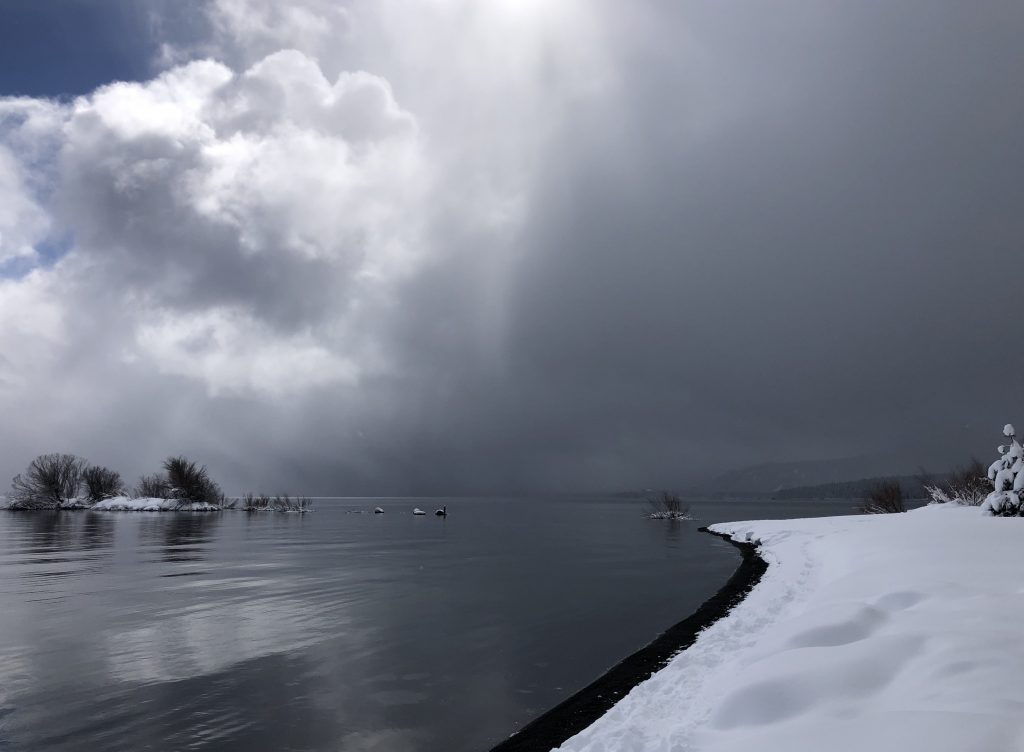
After time well-spent with good friends in a beautiful location, it was time to head back home. Lucky for us that trip was uneventful and much quicker. We started out in chilly 18°F winter weather in Tahoe City, took off the chains in Truckee, and descended 7200 feet over 125+ miles to arrive home to sunny 55°F weather.
Energy Use: what goes up must come down
As expected we a lot more energy going up, but regained a good bit of that coming down 2 days later. On the round trip up we started from home with 309 miles of rated range, drove 129 miles, climbed 7200 feet in cold, heavy snow, with the front defroster heat on for the last five hours, (did I mention the trip up took 9½ hours?), chains on the rear wheels for the last 55 miles. We arrived at our destination with 118 miles in the pack. So we used 191 miles of rated range and 46 kWh (~62% of the fully charged battery pack) for the trip up the mountain. That came to 356 Wh/mile going up.
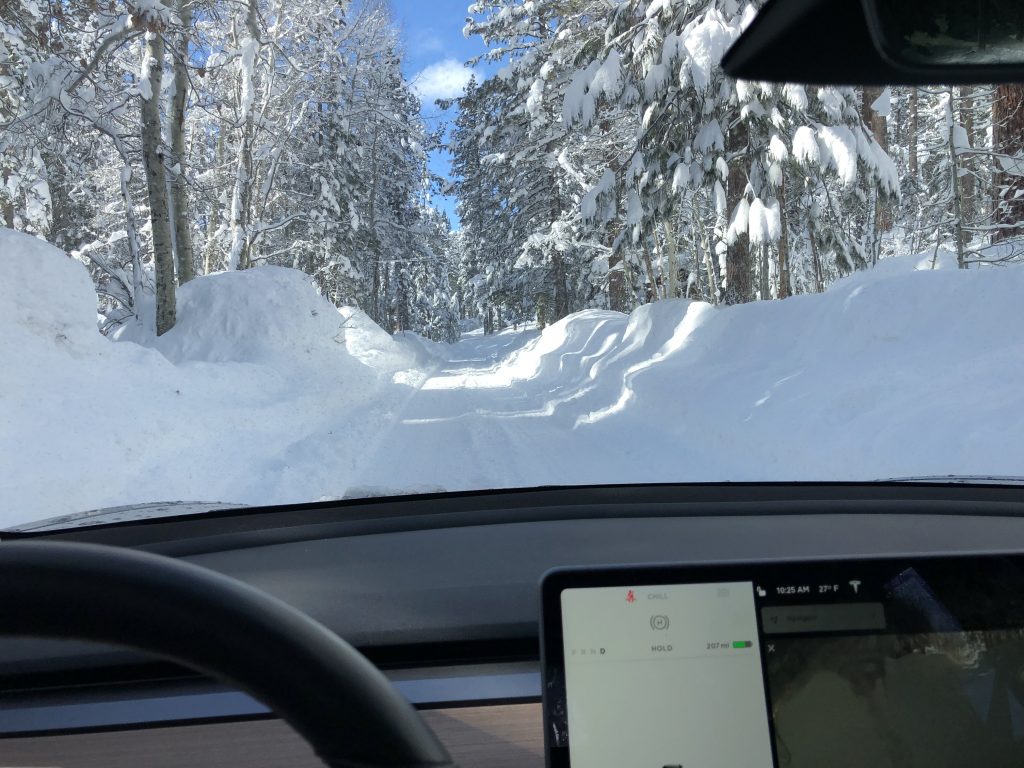
I added 90 miles to the pack on a 120V outlet and started the trip home with 208 miles of range. On the 7200 ft descent we only used 80 miles of rated range and 19 kWh from the pack for the 129 miles. That came to 145 Wh/mile going down.
Round trip: 271 miles of rated range to travel 259 miles; 250 Wh/mile.
Range
At no point was I concerned about range. Granted, this confidence came after 5 years of driving EVs and 2 previous trips up to the Sierras in an EV with an EPA range of 113 miles. So, even though the conditions were pretty much worst case scenario, I knew the range of the Model 3 was up to the task. Adding to that confidence was knowing there were 2 Supercharger locations in Truckee if needed on arrival. In addition, there are Superchargers in Sacramento, Rocklin, and Roseville along Route 80. We also had convenient 120V outlet charging at our destination. In short we were fine. BTW: There’s also a Supercharger in Tahoe City, and on the south shore of Lake Tahoe at the CA/NV stateline for destination charging.
Summary:
- We left home with 309 miles of range. Drove 129 miles in comfort* through cold, heavy snow while climbing 7200 feet, chains on rear wheels the last 55 miles to arrive with with 118 miles of range remaining in the pack.
- The 129 mile trip up the mountain in heavy snow used 191 miles of rated range on the way up, but only 80 miles of range on the way back down.
- 360 Wh/mile on the way up, 145 Wh/mile down. Round trip efficiency = 250 Wh/mile.
- The return trip downhill regained a good bit of the energy spent going up.
- Knowing that Tesla’s Supercharger network was there gave us the confidence to make the trip without hesitation.
- 120V destination charging added 90 miles to the pack giving us 208 miles for the return trip. Otherwise we would have stopped at the Truckee supercharger for 15 minutes on the way home.
- We’re at the point where you don’t have to say the Model 3 is an EV. It’s a car, and a damn good car at that.
- *Comfort: we were comfortable in terms of temperature and seating… 9½ hours in heavy snow is not my first definition of a pleasure cruise.

